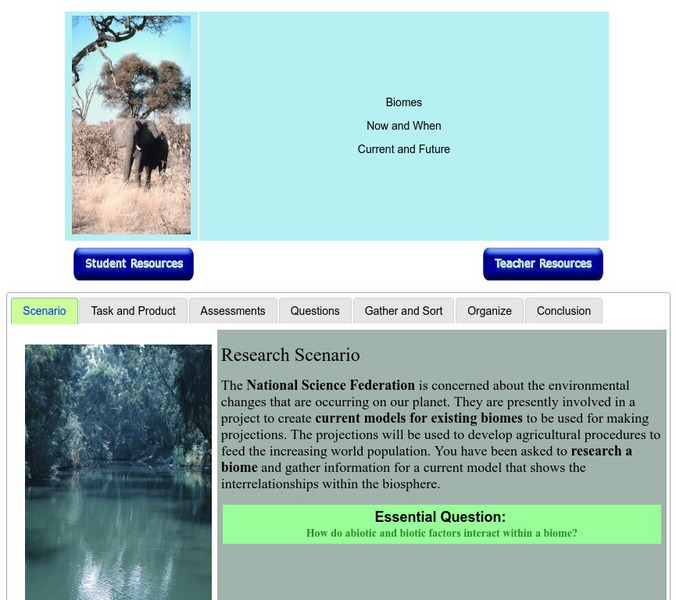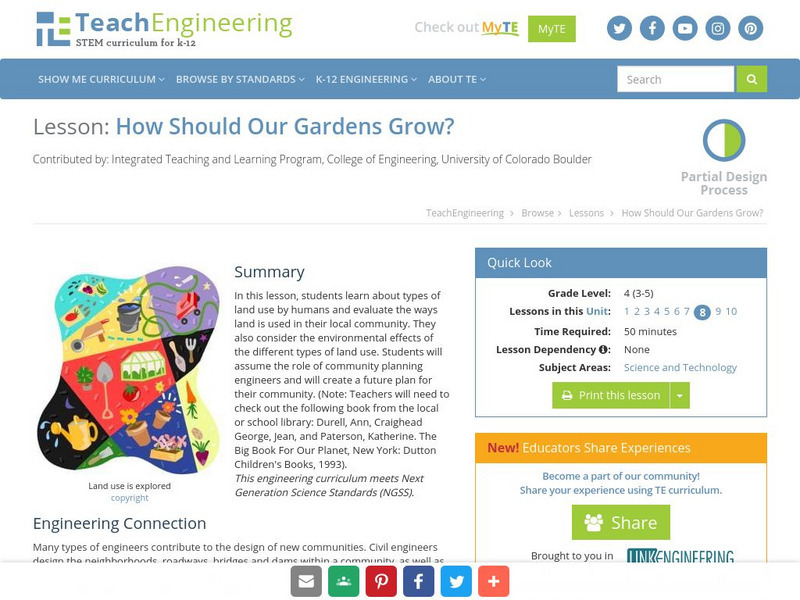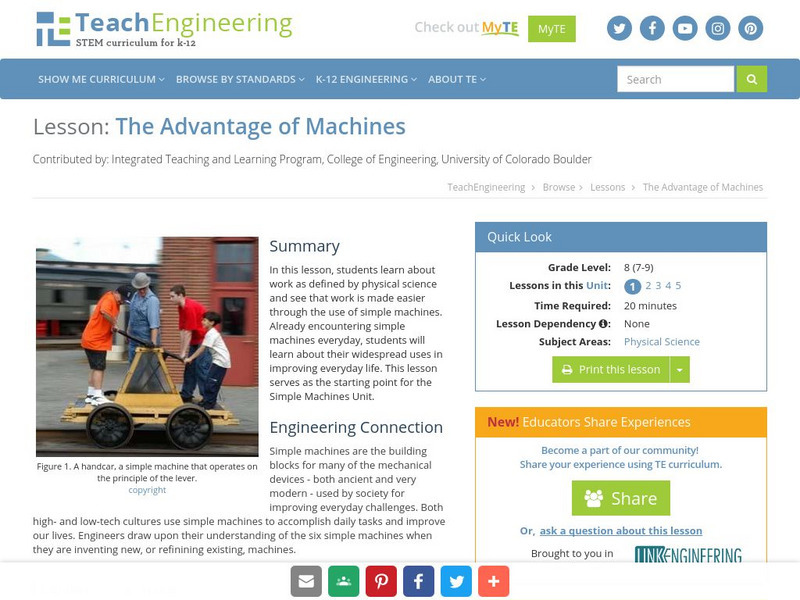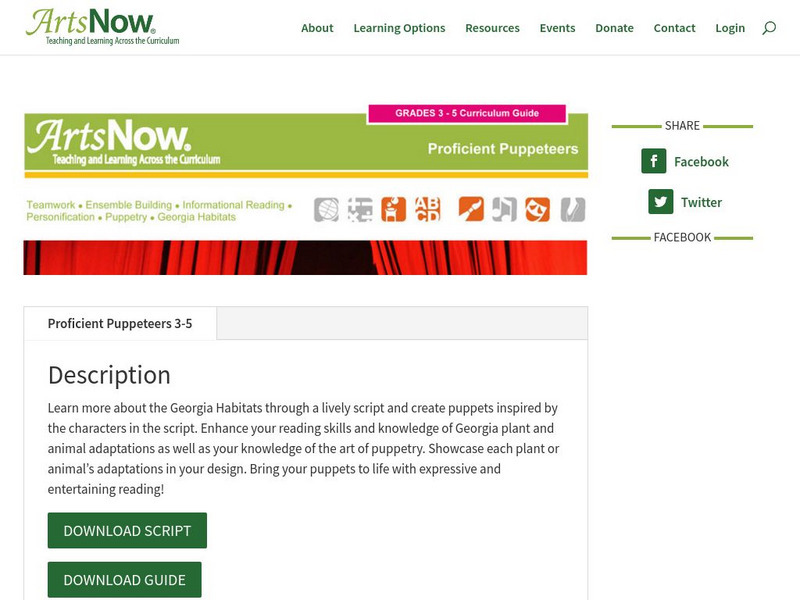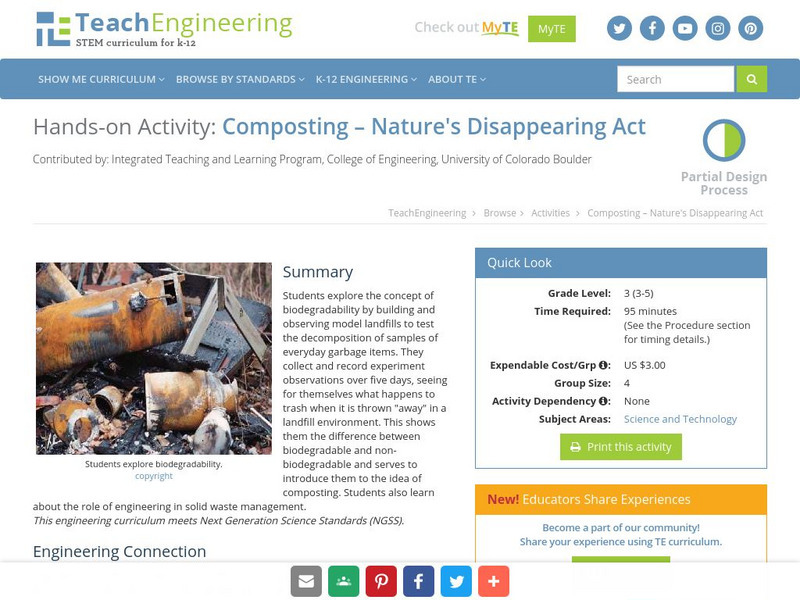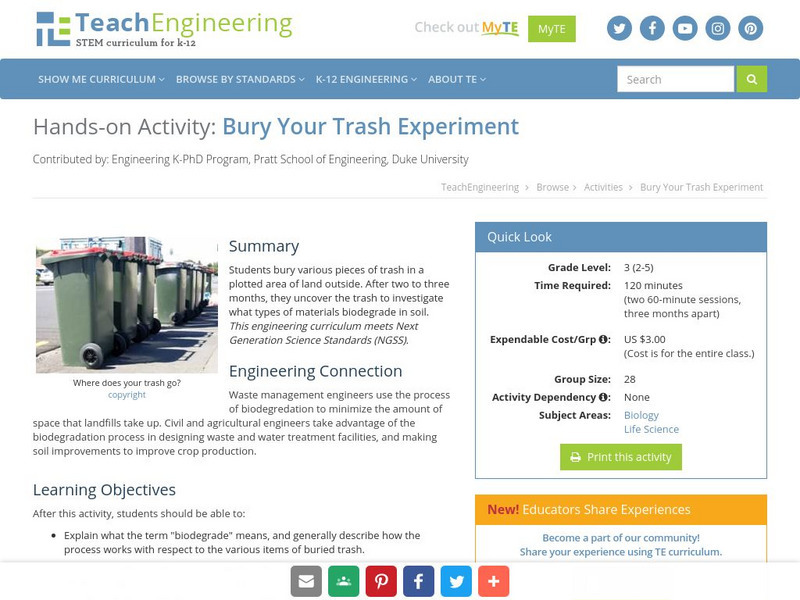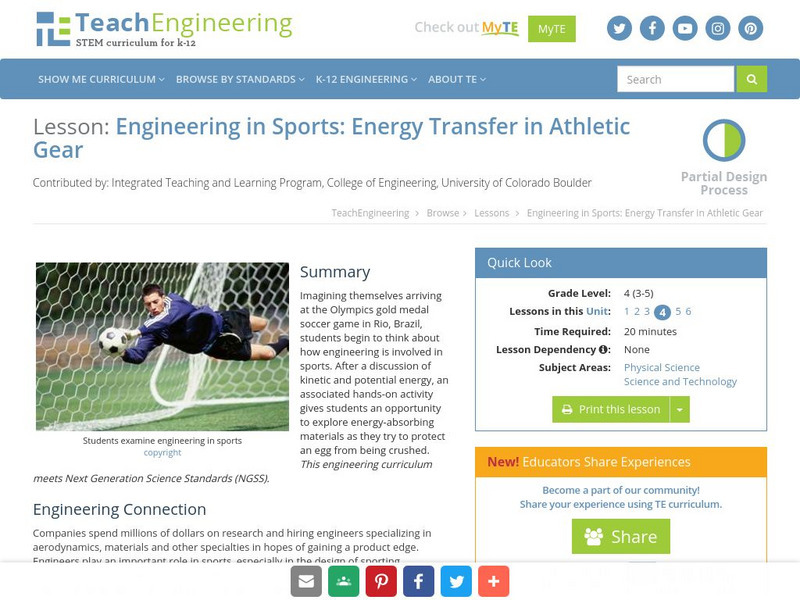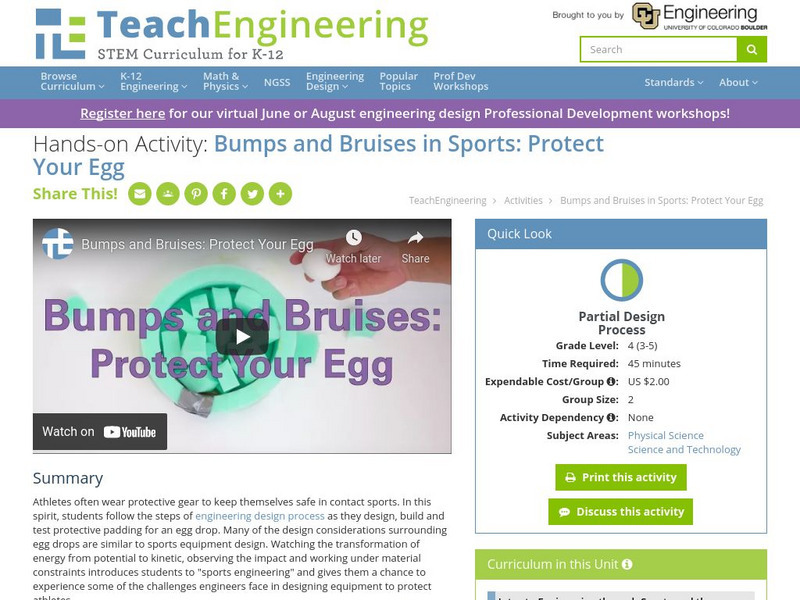Sophia Learning
Sophia: Physics: Fluid Force Integral Calculation
Created to teach students of the 21st century, SOPHIA is bringing the 8 parts of speech straight to your fingertips. Become the commander of your own learning experiences as you take part in this interactive lesson,
Other
Baltimore County Public Schools: Biomes: Now and When (Online Research Model)
Biomes lesson designed to answer the question, how do abiotic and biotic factors interact within a biome? integrates biological concepts with literacy knowledge and skills. Includes directed questions, assessment guides, project...
TeachEngineering
Teach Engineering: The Science of Swinging
Students learn what a pendulum is and how it works in the context of amusement park rides. While exploring the physics of pendulums, they are also introduced to Newton's first law of motion - about continuous motion and inertia.
TeachEngineering
Teach Engineering: 3 Rc (Reduce, Reuse, Recycle and Compost)
In this lesson, students expand their understanding of solid waste management to include the idea of 3RC (reduce, reuse, recycle and compost). They will look at the effects of packaging decisions (reducing) and learn about engineering...
TeachEngineering
Teach Engineering: How Should Our Gardens Grow?
In this lesson, students will learn about types of land use by humans and evaluate the ways land is used in their local community. They will also consider the environmental effects of the different types of land use. Students will assume...
TeachEngineering
Teach Engineering: Checking the Surf
This lesson introduces the concepts of wavelength and amplitude in transverse waves. In the associated activity, students will use ropes and their bodies to investigate different wavelengths and amplitudes.
TeachEngineering
Teach Engineering: To Absorb or Reflect, That Is the Question
This is the last of five sound lessons, and it introduces acoustics as the science of studying and controlling sound. Students learn how different materials reflect and absorb sound.
TeachEngineering
Teach Engineering: Destination Outer Space
Students acquire a basic understanding of the science and engineering of space travel as well as a brief history of space exploration. They learn about the scientists and engineers who made space travel possible and briefly examine some...
TeachEngineering
Teach Engineering: The Advantage of Machines
In this lesson, young scholars learn about work as defined by physical science and see that work is made easier through the use of simple machines. Already encountering simple machines everyday, students will be alerted to their...
TeachEngineering
Teach Engineering: Life in Space: The International Space Station
Students are introduced to the International Space Station (ISS) with information about its structure, operation and key experiments. The ISS itself is an experiment in international cooperation to explore the potential for humans to...
TeachEngineering
Teach Engineering: Sound Environment Shapers
For this lesson, students are introduced to the sound environment as an important aspect of a room or building. Several examples of acoustical engineering design for varied environments are presented to students. Students learn the...
Alabama Learning Exchange
Alex: Using Primary Sources
This is an interdisciplinary inquiry-based instructional activity that focuses on critical thinking. Students are introduced to the true story of the first Thanksgiving with the reading of a NCSS Notable Trade Book Thanksgiving: The True...
Alabama Learning Exchange
Alex: Human Population Growth Web Quest
This is a technology-based lesson plan that integrates science and math to investigate the dynamics of population growth.
ArtsNow
Arts Now Learning: Proficient Puppeteers
In this lesson, students create puppets for the characters in a Reader's Theater script called 'Georgia State Animals & Plants: Habitats and Adaptations.' The puppets showcase the adaptations for each plant or animal. Students then...
TeachEngineering
Teach Engineering: Composting Nature's Disappearing Act
In this activity, students explore the idea of biodegradability by building and observing a model landfill. This serves as an introduction to the idea of composting. Students learn about the role of engineering in solid waste management.
TeachEngineering
Teach Engineering: Bury Your Trash!
This activity will allow students to bury various pieces of trash in a plotted area of land outside. After approximately two to three months, the trash will be uncovered to allow the students to investigate what types of materials...
TeachEngineering
Teach Engineering: Art in Engineering Moving Art
Students learn how forces are used in the creation of art. They come to understand that it is not just bridge and airplane designers who are concerned about how forces interact with objects, but artists as well.
TeachEngineering
Teach Engineering: Engineering in Sports
Imagining themselves arriving at the Olympic gold medal soccer game in Beijing, students begin to think about how engineering is involved in sports. After a discussion of kinetic and potential energy, an associated hands-on activity...
TeachEngineering
Teach Engineering: Bumps and Bruises
Students learn about the role engineers play in creating protective gear for sports. Students then build a protective landing pad to catch a dropped egg without it breaking
Alabama Learning Exchange
Alex: Abc's of Banking
This lesson is a practical hands-on approach to banking services. The students will be able to integrate banking knowledge with practical personal applications. Students will investigate factors that influence banking services. This...
PBS
Idaho Public Television: Ocean Murals
Integrative lesson plan incorporates math, science and art to teach children about the ocean and its inhabitants. Multiple activities included, approximately 4-6 days to complete. to other sources on oceans. References Bill Nye video...

